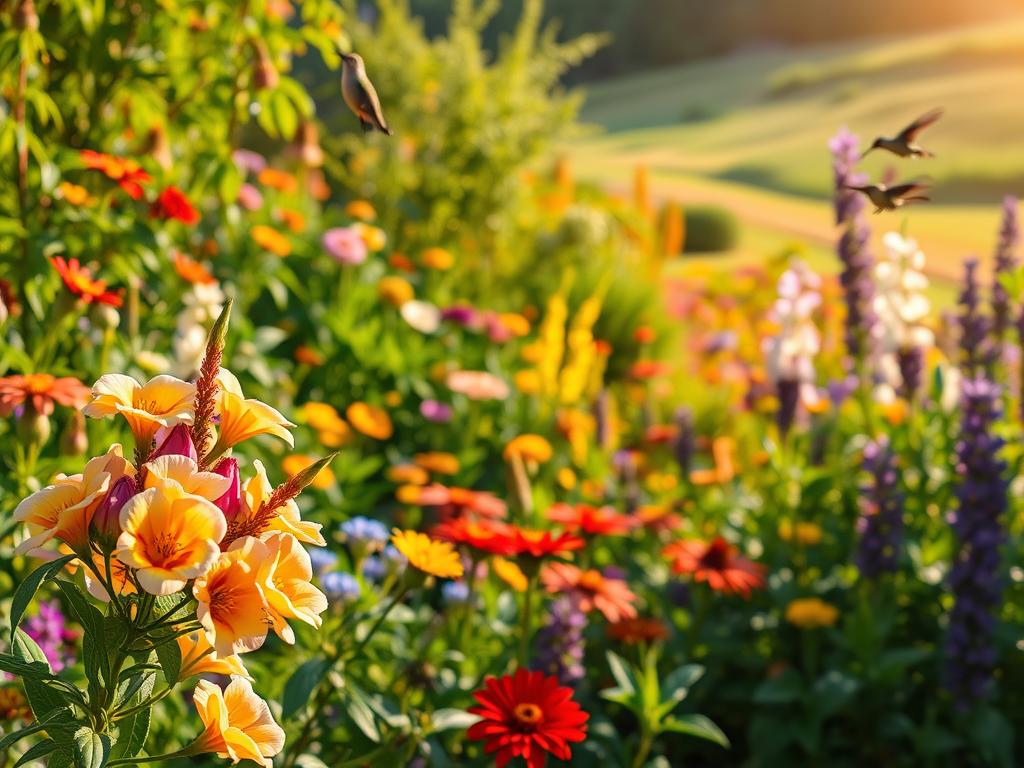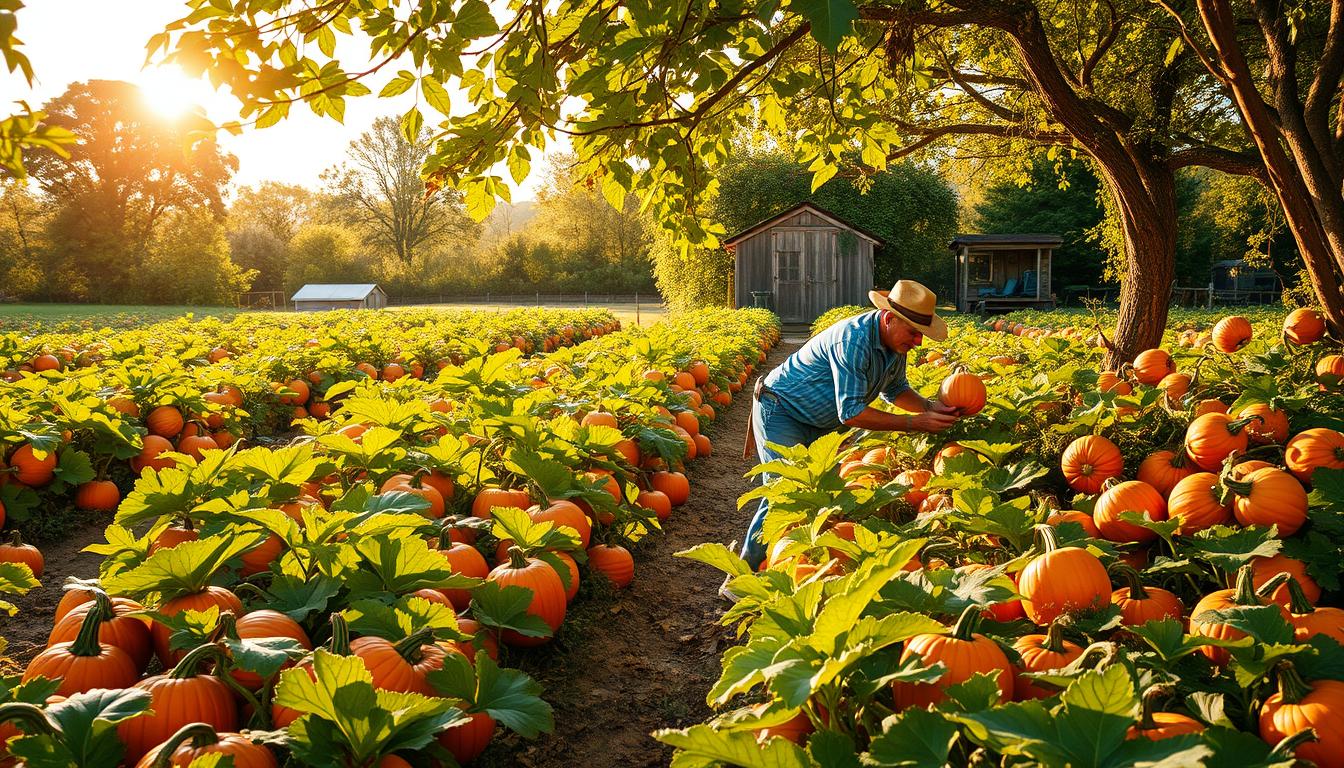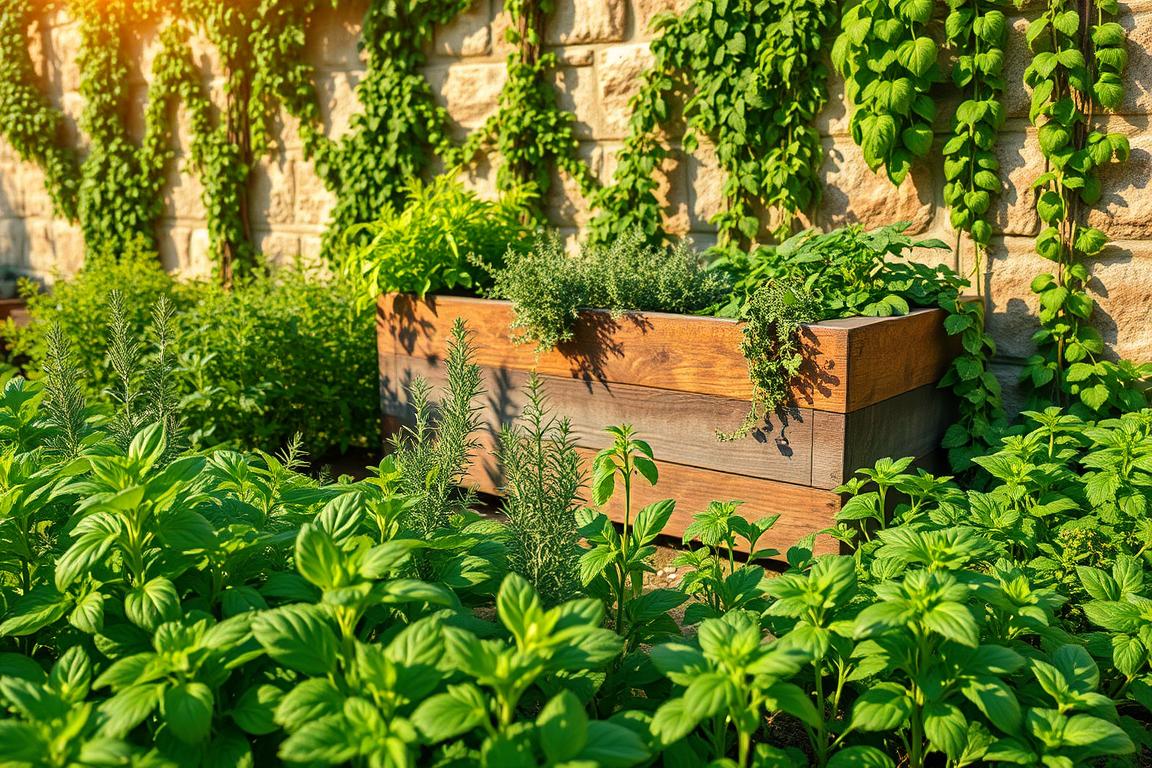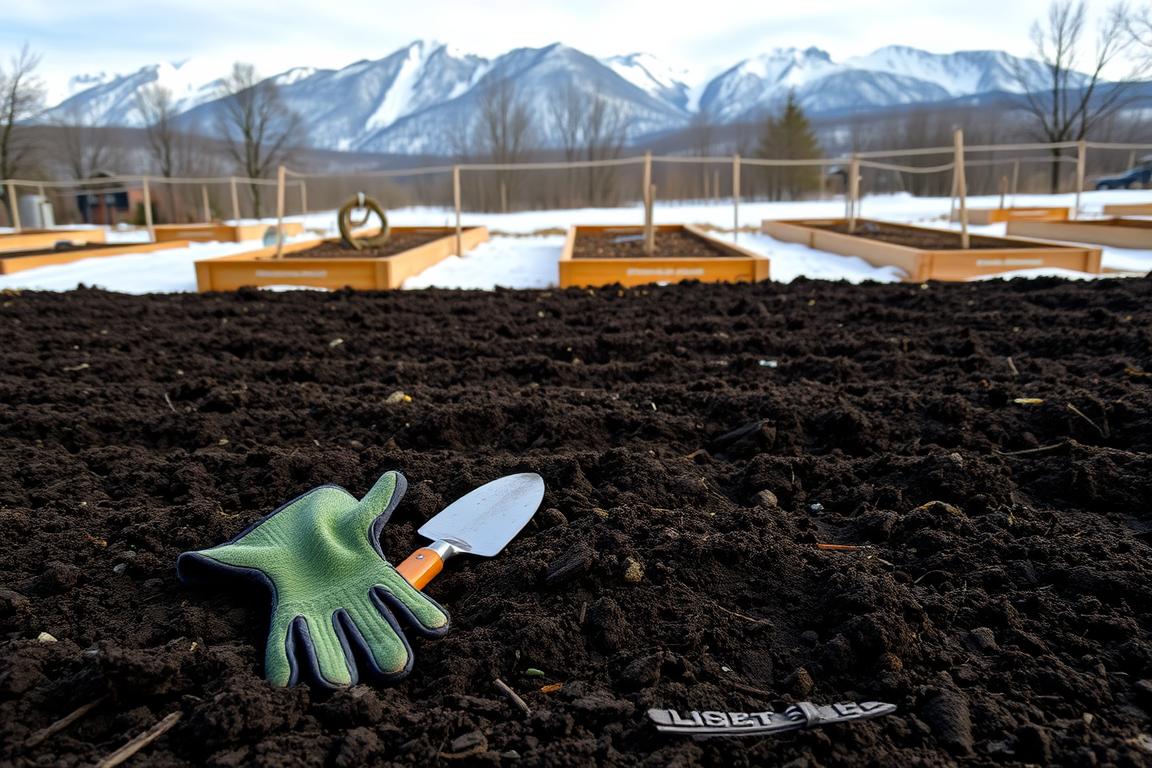Creating a haven for hummingbirds can make your outdoor space more magical. Attracting these tiny, iridescent creatures adds a special touch to your yard.
Designing a garden that meets their needs lets you enjoy their company all summer. In this article, we’ll cover the basics of creating a hummingbird paradise. We’ll talk about their behavior and the best plants to use.
Key Takeaways
- Understand the basics of hummingbird behavior to attract them.
- Learn how to design a garden that meets their needs.
- Discover the best plants to include in your hummingbird gardens.
- Create a welcoming environment for these beautiful creatures.
- Enjoy the benefits of having hummingbirds in your yard.
The Magic of Hummingbirds in Your Garden
Creating a hummingbird-friendly garden is more than just making it look good. It’s about adding a touch of magic to your outdoor space. Watching hummingbirds in your garden brings joy and shows the many benefits they offer.
Why Hummingbirds Are Garden Treasures
Hummingbirds make your garden come alive with their beauty. They are a sign of a healthy garden. By attracting them, you help support biodiversity.
Their role in pollination is vital. Like bees and butterflies, hummingbirds pollinate plants as they drink nectar. This helps your garden thrive.
“Hummingbirds are important pollinators of many plant species, and their role in maintaining ecosystem balance is significant.”
The Ecological Benefits of Attracting Hummingbirds
Attracting hummingbirds to your garden has many ecological benefits. They help pollinate plants, which is key for plant reproduction. They also control insect populations, keeping your garden balanced.
| Ecological Benefit | Description |
|---|---|
| Pollination | Hummingbirds transfer pollen between flowers as they feed, aiding in plant reproduction. |
| Insect Control | By consuming insects, hummingbirds help to regulate pest populations in your garden. |
| Biodiversity | The presence of hummingbirds indicates a healthy, diverse ecosystem. |
Understanding the ecological benefits of hummingbirds shows their value in your garden. Designing your garden for them makes it beautiful and supports a healthy ecosystem.
Understanding Hummingbird Behavior and Needs
To attract hummingbirds, you need to know their behavior and needs. This includes understanding the different hummingbird species, their eating habits, and when they migrate. By doing this, you can make your garden a welcoming place for them.
Hummingbird Species in the United States
The U.S. is home to many hummingbird species. Eight are common, and a few are rare. You’ll often see Ruby-throated, Rufous, and Broad-tailed Hummingbirds.
- Ruby-throated Hummingbird: Known for its bright red throat patch, this species is common in the eastern United States.
- Rufous Hummingbird: This species migrates through the western United States and is recognized by its orange-red color.
- Broad-tailed Hummingbird: Found in the Rocky Mountains, this hummingbird has a distinctive broad tail.
Feeding Habits and Preferences
Hummingbirds love gardens full of nectar-rich flowers. They eat nectar, insects, and spiders for protein. They prefer flowers with long, tube-shaped structures, like trumpet vines and salvias.
To meet their needs, consider these tips:
- Plant a variety of nectar-rich flowers that bloom at different times.
- Use native plants that attract hummingbirds.
- Don’t use pesticides, as they harm hummingbirds and reduce insect numbers.
Migration Patterns and Seasonal Considerations
Hummingbirds migrate across North America. Each species has its own migration patterns. Knowing these patterns helps you prepare your garden for their visits.
For instance, Ruby-throated Hummingbirds migrate from Central America to the eastern U.S. in spring. Rufous Hummingbirds move from Mexico to the western U.S. By understanding these migrations, you can ensure your garden is ready for them.
Planning Your Hummingbird Gardens: The Basics
A well-designed hummingbird garden is a haven for these tiny birds. It provides them with the resources they need to thrive. When planning your garden, consider the location, layout, and essential habitat elements that attract hummingbirds.
Selecting the Perfect Location
The location of your hummingbird garden is crucial. Hummingbirds love areas with plenty of sunlight. Choose a spot that gets at least 4-6 hours of direct sunlight per day. Also, pick a location close to a water source, as hummingbirds need it for drinking and bathing.
Key Location Factors:
- Sunlight exposure
- Proximity to water source
- Protection from strong winds
Creating a Garden Layout for Hummingbirds
A well-planned garden layout is vital for attracting hummingbirds. Create a layered effect by mixing plants of different heights and growth habits. This gives hummingbirds various perching and feeding options.
Tips for a hummingbird-friendly layout:
- Incorporate a mix of annuals and perennials
- Use a variety of plants with different bloom times
- Create a focal point, such as a water feature or feeder
Incorporating Essential Habitat Elements
Hummingbirds need more than plants. They require water features and shelter. Add a shallow dish or birdbath with fresh water. Also, include native shrubs and trees for shelter and nesting sites.
| Habitat Element | Description | Benefits |
|---|---|---|
| Water Feature | Shallow dish or birdbath with fresh water | Provides drinking and bathing water |
| Native Shrubs and Trees | Plants that provide shelter and nesting sites | Offers protection from predators and harsh weather |
| Nectar-Rich Flowers | Plants with brightly colored, tubular flowers | Provides a source of food and energy |
By adding these essential elements and designing a garden for hummingbirds, you can create a welcoming haven for these beautiful birds.
Best Plants for Hummingbird Gardens
To make a hummingbird garden thrive, choose native plants full of nectar. A mix of flowers, vines, and shrubs native to your area will attract these birds. This creates a perfect haven for them.
Native Nectar-Rich Flowers
Native flowers are key for a hummingbird garden. Favorites like bee balm, cardinal flower, and salvias are rich in nectar. Hummingbirds love red, orange, and purple flowers.
Using both annuals and perennials ensures nectar all season. For example, coral bells and foxgloves with bee balm make a lively garden.
Vines and Shrubs That Attract Hummingbirds
Vines and shrubs are also crucial. Trumpet honeysuckle is a hit with its long, nectar-rich flowers. It’s a perfect food source for hummingbirds.
Shrubs like azalea and weigela also attract hummingbirds. They offer nectar, shelter, and places to perch, making your garden welcoming.
Creating Year-Round Blooms for Continuous Feeding
To keep hummingbirds coming back, plan for blooms all year. Choose plants that bloom at different times. This ensures nectar is always available.
- Spring bloomers like red columbine and coral bells offer early nectar.
- Summer bloomers such as bee balm and salvias bloom as it gets warmer.
- Fall bloomers like asters and sedum provide nectar for migration.
By picking and planting a variety of native plants, you can make a garden that feeds and shelters hummingbirds all year.
Color Strategies to Attract Hummingbirds
Creating a hummingbird-friendly garden is all about color. By using a smart color strategy, you can draw these birds to your yard. This makes your garden a vibrant oasis.
Why Red Is the Ultimate Hummingbird Attractant
Hummingbirds love the color red. Many feeders and flowers are red to attract them. Red is easy for hummingbirds to see in the garden, helping them find nectar-rich flowers. Adding red flowers like salvias or bee balm makes your garden a hummingbird hotspot.
In my garden, I’ve seen hummingbirds go for red flowers. “Red tells hummingbirds there’s nectar,” says a famous bird expert. Using red flowers makes your garden a welcoming place for hummingbirds.
Using Other Bright Colors Effectively
Hummingbirds also like orange and pink flowers. These colors make hummingbirds feel at home in your garden. Mixing red, orange, and pink flowers makes your garden diverse and inviting. This attracts hummingbirds and other pollinators.
Here are some ways to use bright colors:
- Plant orange lantana or pineapple guava for a splash of color
- Add pink petunias or coral bells for a soft look
- Use yellow or purple flowers for contrast and interest
By carefully choosing colors for your garden, you can make a hummingbird-friendly oasis. This oasis will attract hummingbirds and other wildlife.
Designing a Hummingbird-Friendly Landscape
A well-designed landscape can be a haven for hummingbirds. It provides them with shelter, food, and water. To create such a haven, it’s crucial to understand what attracts these birds and makes them feel safe.
Creating Layers and Perching Spots
Hummingbirds need perches and sheltered areas for protection. By incorporating layers of vegetation, you can provide them with the necessary cover. Including native plants in your landscape design can help achieve this.
Installing perching spots, such as thin branches or wires, can give hummingbirds a place to rest. This allows them to observe their surroundings safely.

Water Features for Hummingbirds
Hummingbirds are attracted to water features. These provide them with drinking water and a place to bathe. Incorporating a shallow, moving water feature, such as a birdbath or a small fountain, can attract hummingbirds.
The sound of running water can also enhance your yard’s attractiveness. This makes your yard more appealing to hummingbirds.
Shelter and Nesting Site Considerations
Providing shelter and nesting sites is crucial for hummingbirds. You can achieve this by incorporating native vegetation into your landscape design. Planting native flowers and shrubs that provide shelter and potential nesting sites can help support the local hummingbird population.
It’s also essential to avoid using pesticides. These can harm hummingbirds and other wildlife. By incorporating these elements into your landscape design, you can create a hummingbird-friendly haven. This will attract these beautiful birds to your yard.
Supplemental Feeding: Hummingbird Feeders
Hummingbirds need to eat often, visiting over 1,000 flowers a day. This makes hummingbird feeders a key source of energy. By offering the right nectar and placing feeders well, you can draw these birds to your garden. This supports their fast metabolism.
Choosing the Right Feeders
When picking hummingbird feeders, consider a few things. Look for ones that are easy to clean and have ant moats to keep ants out. Choose feeders with bright colors, like red, to attract hummingbirds. Also, find ones with built-in bee guards to keep bees away.
Proper Placement of Feeders
Where you put hummingbird feeders is key. Place them in a shaded area to stop the nectar from spoiling fast. Put them near flowers that hummingbirds like, but not too close. Make sure they’re easily accessible for you to refill and clean.
Making and Maintaining Nectar Solutions
To make nectar, mix four parts water with one part sugar. Don’t use honey or artificial sweeteners, as they’re bad for hummingbirds. Boil the water first, then add sugar and let it cool before filling feeders. Change the nectar every 3-5 days to avoid mold and bacteria, more so in warm weather.
By following these tips for choosing, placing, and caring for hummingbird feeders, you can make your garden a welcoming spot for these lovely birds.
Maintaining Your Hummingbird Gardens Throughout the Seasons
Keeping your garden welcoming for hummingbirds is key. These birds head to warmer places in winter. So, taking care of your garden is important in other seasons.
Spring Preparation for Returning Migrants
When winter ends, get your garden ready for hummingbirds. Clean up debris and add nectar sources.
Tips for Spring Preparation
- Clean and refill hummingbird feeders to provide a fresh nectar source.
- Prune back plants to encourage new growth and blooms.
- Inspect your garden for any winter damage and make necessary repairs.
Summer Care and Maintenance
In summer, hummingbirds are busy, and your garden should be blooming. Keeping your garden in top shape is crucial.
Key summer tasks include:
- Maintaining a consistent nectar supply by regularly cleaning and refilling feeders.
- Ensuring plants are well-watered, even on hot days.
- Watching for pests and diseases, using natural methods to control them.
Fall and Garden Management
As summer ends, get your garden ready for fall. This means managing plants and feeders for hummingbirds’ migration.
Consider these fall garden tips:
| Task | Description | Benefit |
|---|---|---|
| Reduce Feeder Cleaning Frequency | Clean feeders less often as the weather cools. | Less maintenance during a busy season. |
| Maintain Plant Health | Continue to water and fertilize plants as needed. | Healthy plants offer better shelter and food. |
| Prepare for Next Spring | Plan for new plants or garden changes. | Start planning for next year’s garden. |

Creating a Pesticide-Free Haven
It’s important to make my garden safe for hummingbirds. I use natural ways to keep pests away and grow plants safely. This helps protect these birds and keeps our garden healthy.
Natural Pest Control Methods
I use natural ways to fight pests without harming hummingbirds. I attract good bugs like ladybugs and lacewings. They eat pests that harm my garden.
- Planting a diverse range of flowers that attract beneficial insects
- Using neem oil to control aphids and other soft-bodied pests
- Installing a bat house to attract bats, which feed on nocturnal insects
I also use physical barriers, like fine mesh, to keep pests away. This method keeps my garden safe for hummingbirds and helps it stay healthy.
Safe Gardening Practices for Hummingbird Health
Keeping my garden safe is key for hummingbirds. I avoid using harmful chemicals. These can be dangerous for these birds.
| Safe Gardening Practices | Benefits for Hummingbirds |
|---|---|
| Using organic fertilizers | Reduces chemical contamination |
| Planting native flora | Provides familiar food sources |
| Avoiding pesticides | Prevents poisoning and maintains ecosystem balance |
By following these safe gardening tips, I make my garden a welcoming spot for hummingbirds. They have a safe place to visit and nest.
Regional Considerations for Hummingbird Gardens
Creating a hummingbird garden means adapting to your area’s needs. It’s important to pick the right plants for your climate zone and native species.
Adapting Your Garden to Your Climate Zone
Every region has its own climate, from tropical to arid. Knowing your local climate is key to attracting hummingbirds and growing the right plants.
In warm places like Florida or California, you can grow flowers all year. But in cooler areas like the Northeast or Midwest, choose plants that bloom when it’s warm.
Key considerations for adapting to your climate zone include:
- Understanding the average temperature and precipitation patterns in your area.
- Choosing plants that are native to your region and suitable for your climate zone.
- Being aware of the potential for extreme weather conditions, such as hurricanes or droughts.
Regional Plant Recommendations
Picking the right plants is crucial for hummingbirds. Here are some regional favorites:
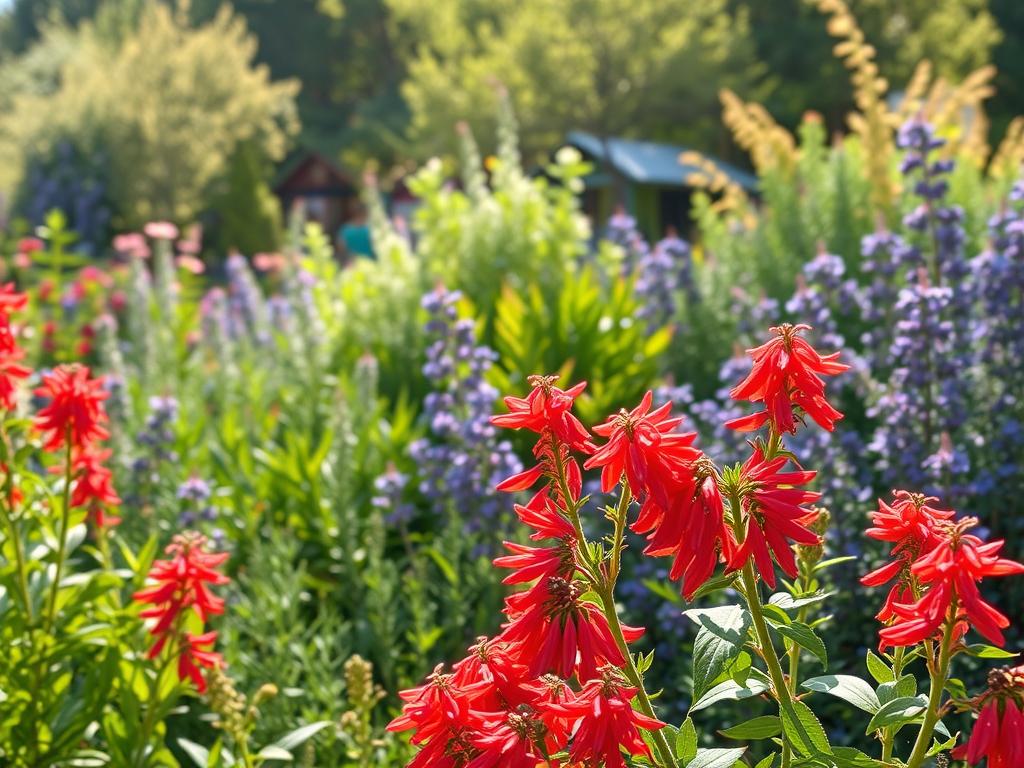
- In the Southeast, Cardinal Flower and Trumpet Vine are great choices.
- In the Southwest, Red Salvia and Desert Marigold are known for their nectar.
- In the Pacific Northwest, Red Hot Poker and Honeysuckle attract hummingbirds when it’s warm.
By using these plants and adapting to your climate, you can make your garden a hummingbird haven.
Enhancing Your Hummingbird Viewing Experience
To make your hummingbird watching better, design your garden for observing. Create spots where you can stay and watch these birds. This way, you can fully enjoy their beauty.
Creating Observation Points
One key thing is to make spots in your garden for watching. Just put a bench or patio set where hummingbirds like to go.
Put your watching spots near flowers or feeders full of nectar. This way, you might see hummingbirds up close. Also, add native plants for shelter and places to perch. This makes your garden a great place for hummingbirds.
“The best way to observe hummingbirds is to create a habitat that attracts them and then sit back and enjoy the show.” – A seasoned hummingbird enthusiast.
Here are some tips to make watching better:
- Arrange feeders and plants to make a “hummingbird highway” for them to follow.
- Use plants that bloom at different times to keep hummingbirds coming back all season.
- Don’t use pesticides, as they can hurt hummingbirds and other helpful animals.
Photography Tips for Capturing Hummingbirds
If you want to take pictures of hummingbirds, remember a few things. First, be patient. Hummingbirds are hard to predict, so you might wait a while for the perfect shot.
| Tip | Description |
|---|---|
| Use a Fast Shutter Speed | Because hummingbirds move fast, you need a quick shutter speed to freeze their motion. |
| Pay Attention to Lighting | The best light for photos is natural light. Try to avoid the harsh sun of midday. |
| Get Up Close | Using a long lens or getting close without scaring them off can make your photos more personal. |
Getting great photos of hummingbirds not only makes your watching more fun but also lets you share their beauty with others.
Conclusion: Enjoying the Rewards of Your Hummingbird Paradise
Creating a hummingbird garden is a rewarding experience. It turns your outdoor space into a haven for these beautiful birds. As you sit in your garden, you’ll see the vibrant colors and energetic activity of hummingbirds.
By following the tips in this article, you’ve started creating a thriving hummingbird paradise. Enjoying the fruits of your labor is a delight. These birds will flit from flower to feeder, their iridescent feathers shining in the sunlight.
As you continue to care for your garden, you’ll find it fulfilling. It’s also a great way to connect with nature. Your hummingbird paradise will become a sanctuary, attracting these wonderful creatures. It gives you a unique chance to observe them up close.
FAQ
What are the best plants to attract hummingbirds to my garden?
To attract hummingbirds, choose native flowers, vines, and shrubs. Look for trumpet-shaped flowers like honeysuckle and fuchsia. Also, consider plants like salvia, coral bells, and cardinal flower.
How do I create a hummingbird-friendly landscape?
For a hummingbird-friendly garden, add layers and perching spots. Include water features and sheltered areas. This gives hummingbirds the food, water, and shelter they need.
What is the best way to supplement the food for hummingbirds in my garden?
Use hummingbird feeders to supplement their food. Pick the right feeders and place them well. Also, keep the nectar solutions clean to help the hummingbirds.
How can I keep my hummingbird garden thriving throughout the year?
Keep your garden healthy by doing seasonal maintenance. Prepare for spring, care for it in summer, and manage it in fall. This keeps your garden welcoming to hummingbirds all year.
How can I create a pesticide-free haven for hummingbirds?
Use natural pest control and safe gardening practices. This protects hummingbirds and keeps your garden balanced.
What regional considerations should I keep in mind when creating a hummingbird garden?
Tailor your garden to your climate zone. Choose regional plants to create a welcoming space for hummingbirds.
How can I enhance my hummingbird viewing experience?
Create spots to watch hummingbirds and use photography tips. This lets you enjoy their beauty more fully.
What are some tips for attracting hummingbirds to my garden?
Mix red, orange, and pink flowers in your garden. Provide constant food and create a welcoming space. Include water features and sheltered areas.
How can I optimize my garden for hummingbirds?
Understand hummingbirds’ behavior and needs. Choose the right plants and add essential habitat elements. This makes your garden a haven for hummingbirds.


